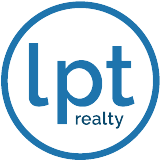Neighborhood Price Patterns Across Austin Metro: What Sold Homes Reveal

Neighborhood Price Patterns Across Austin Metro: What Sold Homes Reveal
Recent sold listings across Austin, Cedar Park, Round Rock, Leander, and Pflugerville tell a nuanced story of where prices are rising, plateauing, or softening in the greater Austin housing market.
Mapping Price Patterns with Sold Data
Average list prices can be aspirational. By contrast, closed-sale data captures what buyers actually paid—making it a powerful tool for understanding neighborhood price dynamics. As Austin’s market shifts from its pandemic-fueled frenzy to a more balanced pace, patterns emerge across different parts of the metro. Some areas continue to appreciate steadily, others have cooled, and a few remain surprisingly resilient. Let’s break down the trends by region to help buyers and sellers align expectations with reality.

Home buyer reviewing neighborhood market data on a tablet
Central and East Austin: Premiums with Plateauing Growth
The urban core of Austin—think Downtown (78701), South Congress (78704), and East Austin (78702)—still commands the highest sold prices in the metro. Renovated bungalows and modern townhomes regularly close above $700,000, with new-build condos pushing into the $1 million-plus range. Demand for walkable neighborhoods with nightlife, dining, and quick commutes remains strong. However, sold data shows that price growth here has leveled off compared with the runaway appreciation of 2021–2022. Homes are taking slightly longer to sell, and the list-to-sale ratio hovers near 95–97 percent. Buyers looking in these areas should be prepared to pay a premium but may have more negotiating room than they did a year ago. Sellers should price realistically rather than chasing last year’s peak.

Panoramic view of Austin neighborhoods at sunset
North Austin and Williamson County: Competitive yet Stable
North of downtown, communities in Williamson County—Cedar Park, Round Rock, Georgetown, and parts of Leander—offer a blend of affordability, good schools, and proximity to employers. Sold data reveals strong absorption rates in affordable and mid-price ranges, indicating steady demand. In Cedar Park, homes priced around $300,000 see an 89 percent absorption rate; $400,000 properties sell at 61 percent, and surprisingly, $900,000 homes see a 117 percent rate. This suggests a tight high-end market in Cedar Park for turnkey, larger homes.
Round Rock’s 78681 ZIP code shows absorption of 67 percent for $300,000 homes, 58 percent at $700,000, and 150 percent at $800,000, reflecting intense competition for newer, larger homes near top-rated schools. Leander and Liberty Hill continue to appreciate as buyers seek more land and new construction, though absorption is slightly lower in the $800,000 range (about 57 percent).

New construction home in Leander
Western Retreats: Luxury and Leisure
Head west to Lakeway, Bee Cave, Dripping Springs, and Lago Vista, and you’ll find more space, scenic vistas, and resort-style amenities. Sold prices often exceed $800,000, particularly for homes with Hill Country views or lake access. However, absorption rates tell a tale of cooling demand in the higher price bands: custom estates above $1 million can linger on the market for months, giving buyers leverage to negotiate. In Dripping Springs, $500,000 and $600,000 homes maintain absorption rates around 49 percent and 41 percent respectively, showing moderate demand for mid-range properties. Sellers in these western suburbs should prepare for longer timelines and consider pricing strategies like temporary rate buy-downs or closing-cost assistance.

Southern Corridor: Value in Buda and Kyle
Buda and Kyle, located south of Austin, attract buyers seeking more house for the money. Sold prices here generally range from $350,000 to $500,000, depending on age and upgrades. Days on market are longer than in central or north suburbs—often 30–60 days—because there’s more new construction and resale inventory to choose from. However, sold data shows consistent, modest appreciation of 3–5 percent year-over-year, driven by the extension of SH 45/130 and the steady march of jobs southward. Buyers find value here, especially if they work in south Austin or along the I-35 corridor. Sellers should highlight features like large yards, community amenities, and easy access to downtown to justify their asking price.
Emerging East and Northeast: Pflugerville, Manor, Hutto, and Taylor
The eastern and northeastern arc of the metro is transforming rapidly. Pflugerville and Manor offer entry-level and mid-range homes with sold prices between $300,000 and $450,000. Absorption rates vary: in Manor, certain price ranges show zero absorption, indicating oversupply in new subdivisions; elsewhere, well-priced homes sell steadily. Hutto and Taylor are on the cusp of an economic boom thanks to the construction of a massive semiconductor plant nearby. While current sold prices still hover in the $300,000–$400,000 range, demand is expected to rise as workers relocate for tech jobs. Investors looking for long-term appreciation are eyeing these markets, knowing that sold prices today may be the baseline for tomorrow’s growth.
Price Drivers: Schools, Employers, and Lifestyle
What explains these neighborhood differences? Schools, job hubs, and lifestyle amenities play a major role. Cedar Park and Round Rock boast some of the metro’s top-rated school districts, supporting higher sold prices. Tech employers like Dell, Apple, Samsung, and a host of startups draw highly paid workers to northern and eastern suburbs. Downtown and East Austin command premiums for lifestyle—walkability, entertainment, and cultural cachet. Western areas attract buyers seeking scenic living and luxury homes. Southern suburbs offer affordability and commuting access. Understanding these drivers helps buyers target neighborhoods that align with their priorities and sellers highlight features that command top dollar.
Next Steps
Whether you’re buying or selling, knowledge is your greatest asset. Begin your research with our See Recently Sold Nearby page to explore real sale prices across every Austin neighborhood. Compare these with active listings on our Browse All Homes for Sale tool to gauge whether asking prices align with recent closings. If you’re thinking of selling, request a Free Home Valuation to get a customized pricing strategy based on neighborhood data. With a data-driven plan, you can confidently navigate Austin’s shifting market—capitalizing on patterns rather than guessing at them.
Categories
Recent Posts











